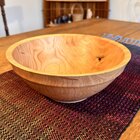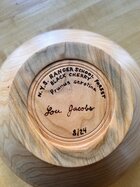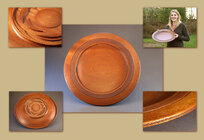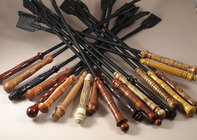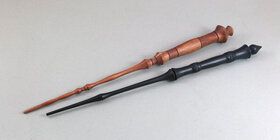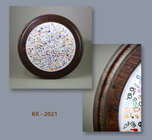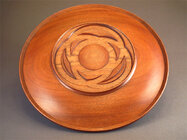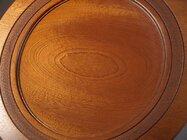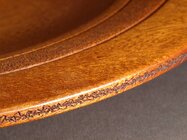I can't help with your question on that piece. I understand the difficulty, but my experience is limited since I usually don't try to sell things - mostly give them away to friends or friends of friends. For me, the joy is in the turning (and the teaching) I've never tried to sell a bowl or platter and over the years have seen many threads on pricing things, but mostly paid no attention. I usually rather give things away than sell them. I do sometimes donate pieces for charity auctions. But I do have a tiny bit of experience in what some people are willing to pay for certain things! It seems to me the more unique something is, the more people will pay.
The last time I auctioned off a platter for charity it went for over $300. But maybe it was that high because it was a good cause. (It did take hours to make.)
View attachment 67028
I made a bunch of these crops for a woman who wanted unique presents for her equine Hunter-Jumper competition team. No one had every seen crops like this.
I told her to make an offer so she gave me $100 each for maybe 25 or so.
(The wood is small and cheap, they are quick to make, and the fiberglass/leather part cost me about $3 each.)
I sold another one under pressure for a friend of a relative - he told the woman they were $300 each!
(Hey, to make money, maybe target people with money!)
View attachment 67029
I might sell when someone twists my arm. To price I think of how much I don't want to sell it, the time I have in it, and the material, although I mostly enjoy turning small things so the material cost is generally low.
When someone
really wanted some of these wands I had on display at a symposium but didn't want to sell, I just priced them real high. I thought they would just go away but they didn't even blink at the price.
View attachment 67030
I did take things to special events a few times and sold them.
At a Harry Potter book release I set up at a bookstore and turned wands while people watched. Those had to be turned very quickly with no time to be fancy, so I charged $25 each. I had spent a lot of time making a detailed batch at home and my son set up a table - I priced those at maybe $40-$75 each. At one of these events we brought in $1740 in three hours. I think all we bought were sold.
The trick here was make things and sell them to people who REALLY want them!
COMPLETELY OFF TOPIC: When someone asks me to make something, I always tell them $60, whatever it is. But I tell them if they come to the shop, it's free. Help pick out the wood, work on the design, and watch while I make it (maybe even learn to make some shavings, sand a bit, or put on some finish. This method introduces a lot of people to woodturning and at least lets them understand what's involved. Most may never have any interest in turning, some may in the future, but I know few who took up the hobby right away.
After one such introduction, a girl returned repeatedly for lessons - now she has her own lathe and a "following" where she lives! She does it all for fun and gives everything away.
This is one of the things she turned in my shop (with a bit of instruction, made up on the spot since I'd never made one!) - a round frame for a friend who embroidered something personally significant for every day of the year 2020. (The friend divided the cloth circle into 12 sections, one for each month - clever!) It was a tricky turning project to design and hold. The turning part was easy for her.
View attachment 67033
JKJ


